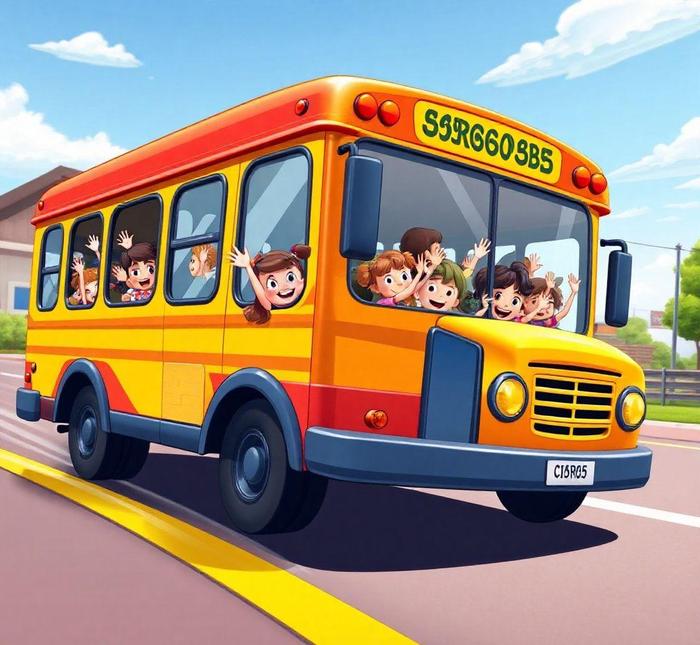- You are here:
- Home »
- words
- » Kindergarten Words That Start With N [LIST]

Kindergarten Words That Start With N [LIST]
Kindergarten is a crucial time for children to begin expanding their vocabulary and understanding the world around them. Introducing words that begin with specific letters can help young learners develop phonemic awareness, spelling skills, and a sense of language structure. The letter ‘N’ is a great starting point, as it includes a variety of simple, fun, and relatable words that children can easily connect to. From everyday objects to animals, colors, and actions, words starting with ‘N’ provide a solid foundation for vocabulary building in early education.
In this article, we have compiled a list of kindergarten words that start with the letter ‘N’. These words are not only easy for young children to pronounce but also come with exciting associations that can make learning enjoyable. Whether it’s learning about nature with words like ‘nest’ or “nut”, or discovering new animals like ‘nose’ or “newt”, the list is full of opportunities to spark curiosity and enhance learning. Parents and educators can use this list to engage children in both fun and educational activities, helping to expand their linguistic skills and foster a love of learning.
Kindergarten Words That Start With N
1. nap
A nap is a short sleep, usually taken during the day, to help refresh the body and mind. It is common for young children to take naps in the afternoon to stay energized.
Examples
- After lunch, it’s time for a nap to rest and feel better.
- The little boy took a nap on the couch before playing outside.
2. neck
The neck is the part of the body that connects the head to the rest of the body. It helps in turning the head and is also where the throat is located.
Examples
- He wears a necklace around his neck every day.
- The giraffe has a very long neck to reach the leaves on tall trees.
3. nose
The nose is the part of the face that helps us smell and breathe. It has two nostrils through which air enters and leaves the body.
Examples
- The dog sniffed the ground with his nose.
- Her nose was cold after playing outside in the snow.
4. nest
A nest is a place where birds, insects, or small animals live or lay eggs. Nests are often made from sticks, grass, or other natural materials.
Examples
- Birds build nests to keep their eggs safe.
- The rabbit hid in a soft nest of leaves and grass.
5. night
Night is the time of day when it is dark outside. It comes after evening and before the morning, and people usually sleep during this time.
Examples
- The stars come out at night, shining brightly in the sky.
- We sleep at night and wake up in the morning.
6. nine
Nine is a number that comes after eight and before ten. It is often used in counting or showing how many things are present.
Examples
- There are nine apples in the basket.
- She counted to nine before jumping rope.
7. no
No is a word used to show that something is not allowed or to refuse a question or suggestion. It is the opposite of ‘yes.’
Examples
- He said no when asked if he wanted more candy.
- The answer is no because it’s too late to play outside.
8. not
Not is a word used to make a sentence negative or to show something is the opposite of what was expected. It is often used to disagree or deny something.
Examples
- This is not my book; it’s hers.
- I am not feeling well today.
9. napkin
A napkin is a piece of cloth or paper used to clean your face or hands while eating. It is often placed beside your plate at the dining table.
Examples
- Please use your napkin to wipe your mouth after eating.
- The napkin is on the table next to your plate.
10. nosebleed
A nosebleed is when blood comes from the inside of the nose, often caused by dry air or an injury. It can usually be stopped by pinching the nose and leaning forward.
Examples
- She had a nosebleed after playing outside in the hot sun.
- If you get a nosebleed, tilt your head forward and press your nose.
11. net
A net is a piece of material, usually made of rope or string, with holes in it. It is used for catching things like fish or sports balls.
Examples
- He caught the fish with a big net.
- The soccer ball went into the net after he kicked it.
12. nail
A nail is a small, pointed metal object used for fastening things together. It is also the hard part at the tip of your fingers and toes.
Examples
- She painted her nails with bright pink polish.
- The carpenter hammered a nail into the wood to hold it together.
13. new
New means something that has just been made or obtained, or something that has not been used before. It is the opposite of old.
Examples
- She got a new toy for her birthday.
- This is my new friend, Lily.
14. needle
A needle is a small, thin tool with a sharp point. It is often used in sewing or for medical purposes, like giving shots.
Examples
- The doctor used a needle to give me a shot.
- She carefully threaded the needle with the sewing thread.
15. nurse
A nurse is a healthcare worker who takes care of patients. They help doctors, give medicine, and make sure people are comfortable when they are sick.
Examples
- The nurse helped take care of the sick child.
- My mom is a nurse at the hospital.
16. numb
Numb means that part of your body cannot feel anything because of cold, pressure, or injury. It often feels like it is not working.
Examples
- My fingers feel numb after sitting in the snow too long.
- The foot was numb after he stepped on it too hard.
17. nothing
Nothing means there is no thing, or not a single thing. It is used to show the absence of anything.
Examples
- There is nothing in the box.
- He has nothing to say about the problem.
18. noisy
Noisy means making a lot of loud sounds. It is often used to describe places or situations with a lot of sound.
Examples
- The baby made a noisy sound when he cried.
- The classroom is noisy because the children are talking.
19. neat
Neat means something is clean, tidy, and in order. It is used to describe a space or a person’s appearance when everything is put in the right place.
Examples
- She kept her room neat and tidy.
- The teacher said the project was neat and well organized.
20. necklace
A necklace is a piece of jewelry worn around the neck. It can be made from materials like gold, silver, beads, or string.
Examples
- She wore a beautiful necklace with shiny beads.
- My grandmother gave me a necklace for my birthday.
21. nut
A nut is a small, hard fruit that grows on trees, such as walnuts, almonds, or peanuts. Nuts are often eaten as snacks.
Examples
- I ate a peanut butter sandwich with nuts on top.
- The squirrel loves to eat nuts from the tree.
22. noodle
Noodles are long, thin pieces of dough that are cooked and often served in soups or pasta dishes.
Examples
- We had spaghetti noodles for dinner tonight.
- The soup was full of noodles and vegetables.
23. near
Near means something is close or not far away. It is used to describe the distance between two places or things.
Examples
- The park is near my house.
- The dog ran near the lake but didn’t jump in.
24. need
Need means something that is necessary or required. It is used when something is important or essential to do something.
Examples
- I need a pencil to write my name.
- She needs more time to finish her homework.
25. nighttime
Nighttime is the period during the night when it is dark outside. It is the opposite of daytime.
Examples
- At nighttime, the stars are visible in the sky.
- It’s too dark outside because it’s nighttime.
Historical Context

The study of language and words often takes us back in time, revealing the deep roots and cultural significance behind even the simplest terms. For young children in kindergarten, the process of learning words is not only about vocabulary acquisition but also about connecting to the broader tapestry of human communication. Words that begin with the letter "N," though seemingly simple, are part of an expansive historical context that reflects the evolution of language itself.
The letter "N" has been a fixture of the alphabet for centuries. Its origins trace back to the Phoenician alphabet, where it was represented by the symbol "nun," meaning "fish" or "serpent." This symbol eventually evolved into the Greek letter "nu" and later into the Latin "N," which is still in use today. In the context of early childhood education, the selection of words starting with "N" often draws from familiar objects or concepts that children can relate to in their everyday lives, like "nest," "noodle," or "night."
Historically, the phonetic sounds associated with "N" have been relatively consistent across languages, making it one of the easier sounds for children to grasp. The letter "N" is also notable because of its frequent appearance in various grammatical and linguistic structures. In many languages, "N" is used as a prefix or suffix to alter the meaning of words. For example, in English, adding "n-" to a word can convey negation (as in "non" or "nobody"). This historical foundation helps explain why "N" is a foundational letter in the early stages of literacy.
The development of language curricula for young children often includes a historical awareness of how sounds and letters were traditionally taught. The emphasis on letters like "N" aligns with a deep-seated understanding of how children instinctively engage with their environment. As children in kindergarten are introduced to the letter "N," they are not only learning how to form the letter or pronounce it but are also participating in a timeless human practice of language development.
Word Origins And Etymology
The etymology of kindergarten words starting with the letter "N" offers a fascinating journey through time, revealing how words have evolved and how their meanings have shifted. Each word carries with it a legacy of linguistic transformation that stretches back through centuries of cultural interaction and change.
-
Nest
The word "nest" originates from the Old English word "neste," meaning a structure built by birds to lay their eggs. The root of the word is traced back even further to the Proto-Germanic "*nestiz," which referred to a place of rest or a sheltered spot. This simple word, associated with a child’s understanding of nature and home, comes from a time when language was deeply intertwined with the natural world.
-
Noodle
"Noodle" is a word with a surprisingly complex etymology, especially given its playful and familiar sound. It originates from the German word "Nudel," which itself comes from the Middle High German word "nūdel." The word "noodle" was likely borrowed into English through Dutch influence in the 18th century. The connection between the word "noodle" and the Germanic roots highlights how different cultures have shaped the way children today enjoy foods that have crossed borders to become global staples.
-
Night
The word "night" has ancient roots in the Indo-European language family. The Old English form was "niht," and the word can be traced back to the Proto-Indo-European root "*nókʷts," which also gave rise to similar words in many other Indo-European languages, such as "nacht" in German and "nocte" in Latin. The word "night" carries with it a deep cultural resonance, as it has been used throughout human history to symbolize rest, mystery, and the unknown.
-
Nose
The word "nose" in English is derived from the Old English "nosu," and further back from the Proto-Germanic "*nosa," which is related to the Latin word "nasus." The roots of the word are found in many Indo-European languages, highlighting the universal human experience of sight, smell, and the sensory importance of the nose across cultures.
-
Nap
Interestingly, the word "nap" likely originates from the Middle English "nappe," meaning a cloth or a cover, which later evolved to mean a light sleep. The term "nap" in the modern sense—referring to a short, refreshing sleep—has become widely associated with young children and their need for rest, showing how language adapts to the cultural practices of different eras.
Each of these words represents a different facet of human experience, from food to nature to the body, and their etymologies reveal how language adapts to meet the needs and curiosities of young learners. The simplicity of words beginning with "N" belies their rich and varied origins, illustrating how languages evolve over time to suit new generations of speakers.
Common Misconceptions
When it comes to teaching young children words that start with "N," there are several misconceptions that can arise, both in terms of pronunciation and meaning. Understanding these misconceptions is crucial for educators and parents to help children gain a deeper understanding of language.
-
"N" is Only for Nouns
One common misconception is that words beginning with "N" are always nouns. While many words that start with "N" are indeed nouns (like "nest" or "night"), "N" is also the starting letter for verbs (like "nod" or "negotiate") and adjectives (like "nice" or "nervous"). This misconception can limit a child’s understanding of the diverse roles that words play in sentences.
-
The Pronunciation of "N" is Always the Same
Another misunderstanding is that the sound of "N" is always the same, but that’s not entirely accurate. In English, "N" can have different sounds depending on the context. For example, in the word "night," the "N" is pronounced clearly as /n/, but in "numb," the "N" is silent. Children may be confused when they encounter this silent "N," especially when it contrasts with other "N"-starting words.
-
"N" Words Are Hard to Learn
Some children may struggle with words starting with "N," particularly when they encounter less familiar words like "knot" or "knife," where the initial "K" sound seems more dominant than the "N." The presence of silent letters can be perplexing, as children may wonder why the "K" is included but not pronounced. This misconception can lead to confusion and frustration in early reading stages.
-
Overemphasis on Familiar Words
Teachers and parents sometimes focus primarily on words that children are already familiar with in their everyday lives, such as "night" or "nose." While these are helpful starting points, it’s important to introduce a variety of "N" words, including those from different contexts, like "neighborhood," "nature," or "narrative." Limiting the scope to only the most familiar terms might hinder a child’s broader linguistic development and their ability to think outside their immediate environment.
-
The Assumption That All "N" Words Are Simple
Some might assume that because "N" words tend to be short, they are automatically easier for children to learn. However, this isn’t always the case. Words like "noodle," with multiple syllables and a complex history, or "neighborhood," with its blend of sounds and structure, can be challenging for kindergartners. These words may require more repetition, contextual explanation, and a gradual buildup of understanding.
Conclusion
In conclusion, the exploration of kindergarten words that start with the letter "N" offers more than just an educational experience in vocabulary building; it serves as a gateway into the history, evolution, and rich diversity of language. Through an understanding of the historical context, word origins, and common misconceptions, we gain insight into how language connects us to our past while shaping our ability to communicate in the present.
Kindergarten is a pivotal time in a child’s cognitive and linguistic development, and every new word learned is not just a step forward in communication, but a brushstroke in the broader canvas of human expression. Words starting with "N," like "nest" or "night," are not just building blocks of language but echoes of the world around us—reflecting nature, culture, and the ongoing evolution of how we understand and interact with the world.
As children master the sounds and meanings of words like "noodle," "nap," or "nose," they are also beginning to grasp the intricate and fascinating ways in which language connects people across time and space. Each word, with its origins, history, and cultural significance, enriches their vocabulary and their understanding of the world. By fostering a deep appreciation for words, we lay the groundwork for lifelong learning and the continued evolution of language.








